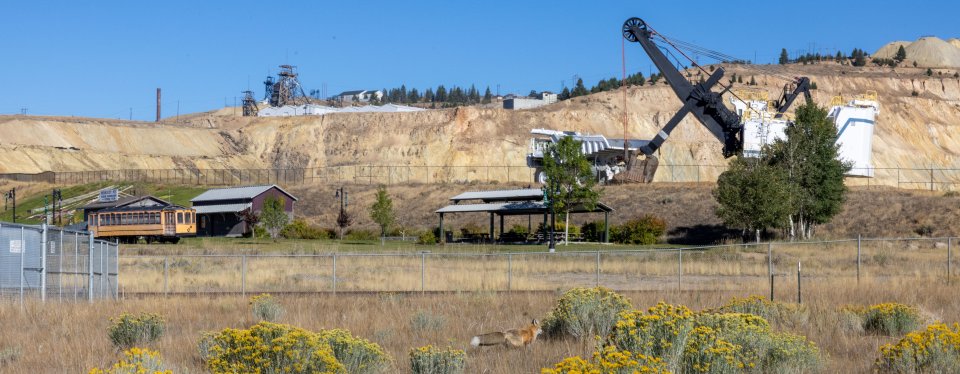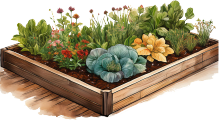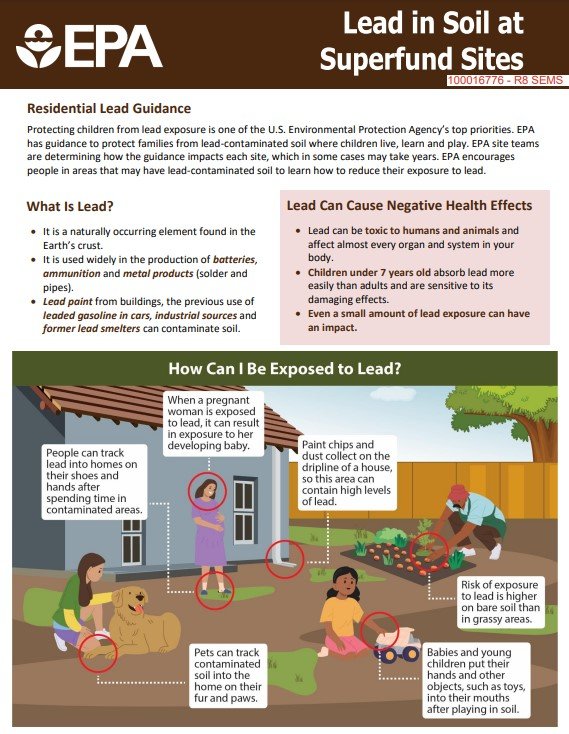Tips for Reducing Lead and Arsenic Exposure in the Butte Community

Lead and arsenic may be found in the soils and interior dust around Butte, Montana. They may be found in the soils and interior dust as a result of decades of mining-related activities in and surrounding the community, or as naturally occurring elements typically found in soils all across the United States. In addition, lead-based paint may also be found in homes built before 1978, the year that lead-based paint was banned for residential use in the United States.
Lead (Pb)
Lead is a metal that can cause health effects in people. These health effects are most harmful to children under the age of six, and pregnant and nursing women.
- CDC website: Lead Exposure Symptoms and Complications
The primary way that young children are exposed to lead is through touching dust or soil that contains lead and then putting their fingers in their mouths. Older homes may have chipping or flaking lead paint, which children may contact and ingest. Over a short period of time, repeated exposures like this can cause elevated blood-lead levels, which can cause a range of health effects like behavioral problems or slowed development.
Although health effects related to lead exposure are more typical in young children because of this type of behavior, adults can also be susceptible to the effects of lead.
- CDC website: How can lead affect my health?
Arsenic (As)
Arsenic is a naturally occurring metalloid, meaning it has some properties of metals and nonmetals. When ingested, arsenic can cause health effects in people, including increased risk of cancer and reduced nerve function.
Arsenic may also be found in the soils and interior dust around Butte as a result of historic mining and related activities. The primary way people are exposed to arsenic in Butte Priority Soils Operable Unit (BPSOU) is by touching dust or soil that contains arsenic and then accidentally ingesting (eating) it. Children are especially prone to this type of accidental ingestion.
- CDC website: Public Health Statement for Arsenic
If you are concerned that your home or yard are affected by lead or arsenic, please contact Butte-Silver Bow’s Residential Metals Abatement Program (RMAP) for soil sampling. The RMAP will evaluate whether cleanup actions, like soil removal and replacement with clean soil, are warranted at your home. This service is offered free of charge for anyone in the Butte area. Please call 406-497-5040 for more information or to schedule residential sampling.
How to Get Tested for Lead and Arsenic
Free finger-prick blood tests for lead are also available for residents of the County. A blood test is the best way to find out if someone has lead poisoning. Please contact Kayla Harvey, BSN, RN to schedule an appointment: 406-497-5003.
- CDC website: Testing for Lead Poisoning in Children
A urine test at your doctor’s office is the best way to test for arsenic exposure.
Steps You Can Take to Reduce Exposure
Families and individuals can take simple steps to reduce their exposure to lead and arsenic. Most of these things, like removing shoes and washing hands before eating, are probably already part of your routines and housekeeping habits. Read on for tips to reduce lead and arsenic exposure at home, in the yard, and at the table.
At home
Lead and arsenic can be tracked into homes by dirt or dust on shoes.

- Removing shoes before entering your home is a highly effective way of reducing the amount of dirt that could be tracked in.
- If you do not remove your shoes, use a doormat to wipe shoes off to help reduce what is tracked into the home.
- If you like to wear shoes in the house, consider getting a pair that you only wear indoors.
- Indoor dust may also contain lead and arsenic from outdoor soil tracked in or chipping paint. Attic dust may also contain lead and arsenic
- Use a damp cloth to wipe down windowsills, counters, tables, and high-touch surfaces like doorknobs to remove dust that may contain lead.
- Damp-mop entryways and hard floors to remove dust and tracked-in soil.
- Vacuum carpets regularly.
- Pets can track soil into homes.
- Try to wipe dogs’ paws off if they are muddy or dirty.
- Bathe dogs regularly to help remove mud, dust, or dirt.
- Encourage children (and adults!) to wash their hands after playing outside, working in the garden, or playing with pets.
- Handwashing, especially before eating, is one of the most effective ways to reduce potential lead and arsenic exposure.
In the yard

- Good grass cover can help to keep soil potentially affected by lead and arsenic away from kids and pets.
- Try to cover areas of the yard with bare soil by re-seeding with grass seed, applying sod, or topping bare areas with mulch or other cover material.
- Try to prevent kids and pets from spending long playtimes in bare areas (a sandbox is a good choice for kids to use instead of bare dirt).
- If you grow vegetables in your garden, try to avoid planting vegetables close to your house near what’s called a “drip zone.”
- Drip zones are the areas of your yard close to your home where rainwater or snowmelt from your roof falls to the ground. If your home has lead paint on its exterior, that paint may flake and fall to the ground in this “drip zone,” leading to higher concentrations of lead in that part of your yard. In a similar way, in the past, mining- and smelting-related activities may have also led to dust contaminated with lead or arsenic landing on your home’s roof in addition to landing on your yard. Rain or snowmelt may have then carried this contaminated dust onto the ground in the drip zone.
- Soil potentially containing lead or arsenic can be attached to the outside of garden vegetables.
- Make sure to thoroughly wash and scrub all vegetables before eating them. This includes throwing away or composting outer leaves and peeling root vegetables, like carrots and potatoes, before cooking or eating them.
- Make sure to wash your hands thoroughly after handling soil.
- If you’re concerned about your yard’s lead or arsenic content, EPA recommends planting edible vegetables in raised beds using lead-free garden soil.
At the table

- A healthy diet helps reduce the harmful effects of lead exposure. Focus on foods rich in iron, calcium, and vitamin C, as they are especially helpful in reducing lead absorption in the body.
- EPA has compiled a resource with healthy meal ideas for kids and parents alike.

